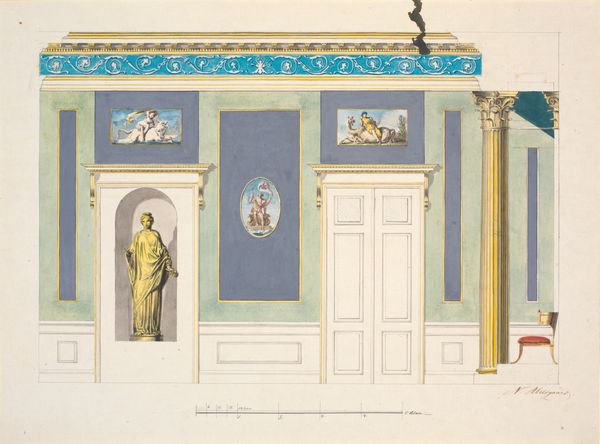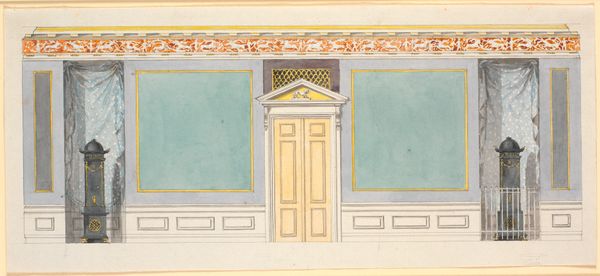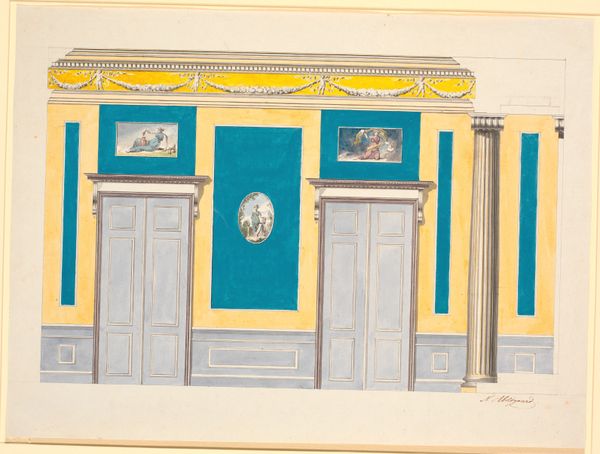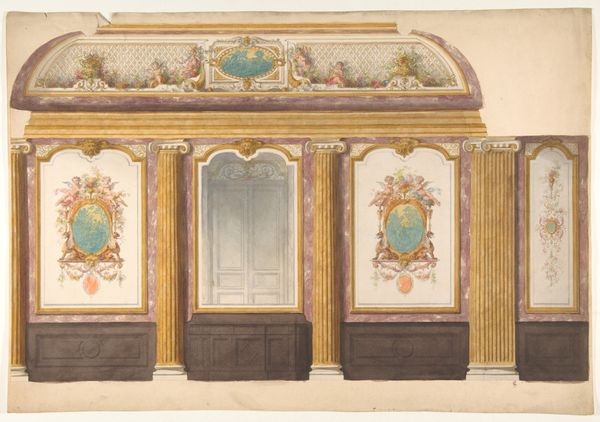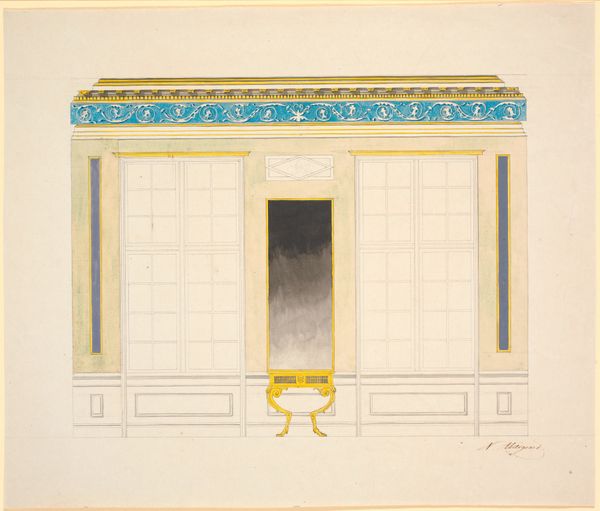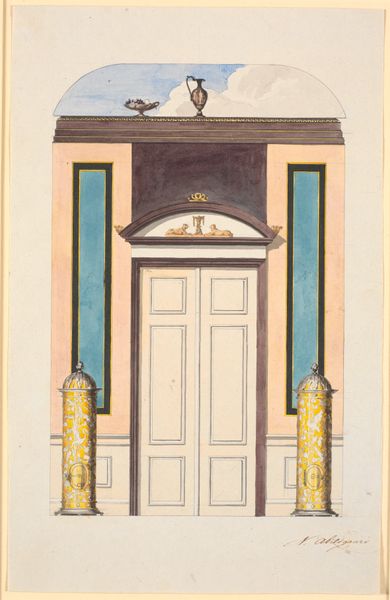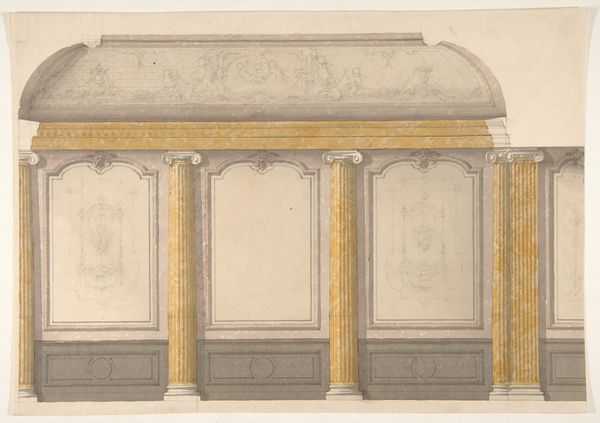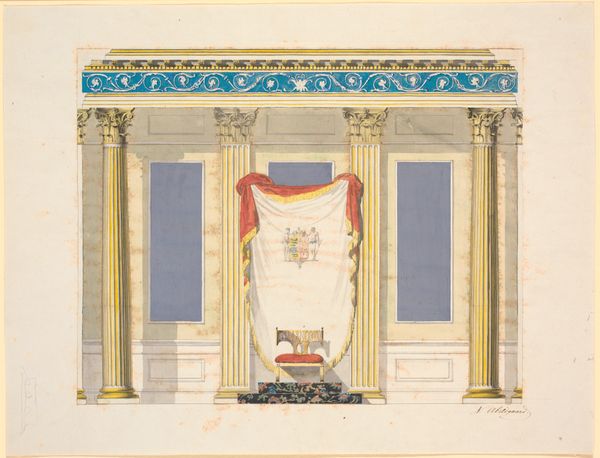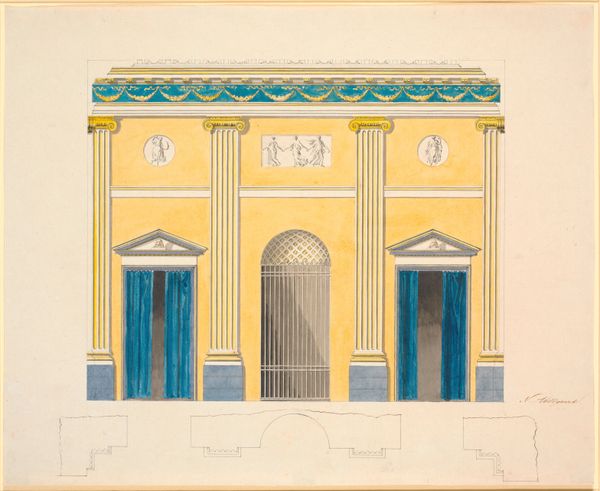
Den anden langvæg. Udkast til dekoration af audienssalen 1790s
0:00
0:00
drawing, pencil
#
drawing
#
neoclacissism
#
classical-realism
#
pencil
#
academic-art
Dimensions: 389 mm (height) x 518 mm (width) (bladmaal)
Editor: So, here we have Nicolai Abildgaard's "Den anden langvæg. Udkast til dekoration af audienssalen," or "The second long wall. Design for the decoration of the audience hall," made in the 1790s. It's a pencil drawing. Looking at this design, it strikes me as so orderly, but strangely lifeless. What do you make of it? Curator: Lifeless, you say? It certainly has that cool, almost aloof neoclassical air, doesn't it? Imagine this on a grand scale, though—think echoing voices, the rustle of silk, the weight of power. Abildgaard wasn’t just drawing lines; he was crafting an environment intended to project authority. Editor: Authority through… doors? I mean, what's the point of depicting architectural elements in such detail? Curator: It’s about more than just doors, isn't it? Look at the balanced composition, the carefully placed friezes. Consider the intellectual climate of the time—the Enlightenment’s fascination with reason and order reflected in the clean lines and classical motifs. Abildgaard is attempting to align the Danish monarchy with the grandeur of ancient Greece and Rome. It's a statement. Do you see it now? Editor: I think so! The details amplify the message. Were those turquoise accents common then, or a bit of personal flair? Curator: Excellent question! The blue is, shall we say, interesting. That chromatic freedom hints that Abildgaard was pushing beyond strict academic restraint. Perhaps revealing the artist's subtle touch, and possibly for specific reasons like room light and space, all part of an intelligent composition strategy, where personal intuition elevates historical imitation. Editor: That's so interesting! So much intention hidden within what seems like a rigid framework. It does have a pulse after all. Curator: Exactly! Art isn’t just about what you see, but how you learn to see.
Comments
No comments
Be the first to comment and join the conversation on the ultimate creative platform.
